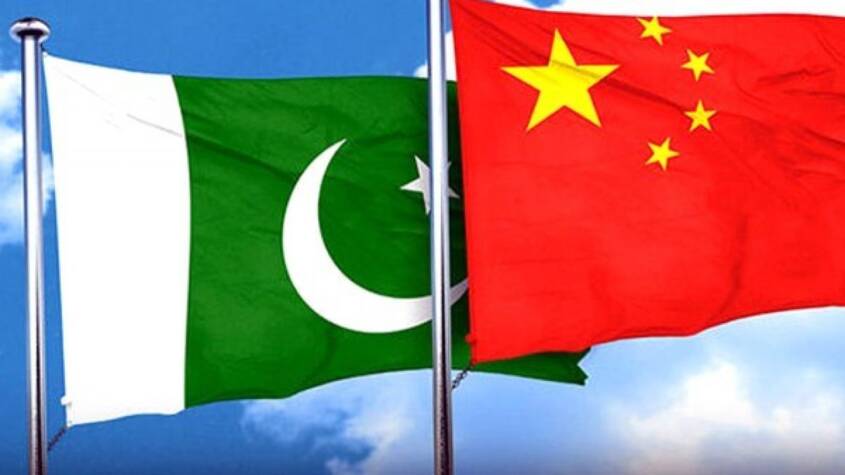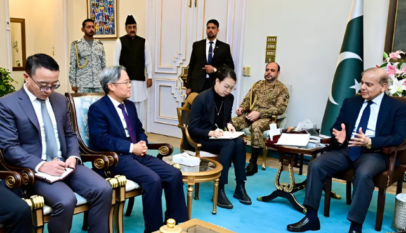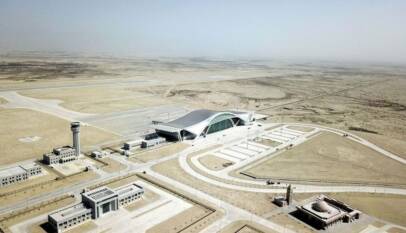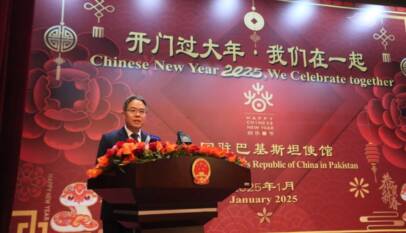Pakistan’s exports to China increase under Free Trade Agreement
As per the State Bank of Pakistan, in 2006, China accounted for 8% of Pakistan’s total imports, around USD 2 billion; by 2020, this stood at USD 10 billion, with an increase of 22%. By 2019 both countries signed 51 new agreements and MoUs under CPEC for cooperation in different fields. In April 2019, the Protocol to amend the Free Trade Agreement between Pakistan and China was formally signed at the Second “Belt and Road” Forum. The Amending Protocol, known as Phase II of the CPFTA, is expected to deepen trade relations between China and Pakistan by slowly increasing trade liberalization and introducing protection mechanisms for their domestic industry, among other things. The new FTA deal gives Pakistan market access, which is at par with ASEAN member countries. CPEC also offers a prospect of Chinese transfer of capital and knowledge base into Pakistan, and for the country to become part of Chinese companies’ Global Value chain hub. This introduction of Chinese companies especially into the SEZ like Rashakai and Allama Iqbal Industrial City offers Pakistan an opportunity to increase its exports.
One of the major incentives to Pakistan in developing a Free Trade Agreement (FTA) with China was to have stronger bilateral economic ties and greater economic integration with a friendly country, with whom it is said to have an ‘all-weather friendship’.
With this in mind, in April 2005, China and Pakistan announced the launch of negotiations on the free trade area during the former Premier Wen Jiabao’s visit to Pakistan. The two countries concluded the China Pakistan Free Trade Agreement (CPFTA) in November 2006, which went into effect in July 2007.
As per the State Bank of Pakistan, in 2006, China accounted for 8 percent of Pakistan’s total imports, around $2 billion; by 2020, this was 22 percent and around $10 billion.
In 2006 bilateral trade volume between the two countries stood at approximately $2.5 billion; this had reached $12 billion in 2019 20, by then both countries had signed 51 new agreements and Memorandums of Understanding (MoUs) under CPEC for cooperation in different fields.
However, whilst trade between the two countries increased significantly, the trade gap also appeared. This widening trade deficit between Pakistan and China became a challenge for both countries as the structure of the Pakistani economy did not adjust to avail the advantages of free trade.
The problem for Pakistan was how to benefit from the FTA, it had to make its industry innovative enough and develop its agriculture to complement with the World’s No. 2 economy.
Pakistani businesses needed time to diversify exports into non-traditional items and expand into semi-finished and finished products. As the tables also show, Pakistan has a very narrow base of exports to China.
Almost around 80 percent of its exports consist of cotton yarn, basic fabric, and rice, and it imports higher value products such as machinery and machine parts, iron and steel manufactures, telecoms, and so on from China.
This understanding of the structure of Pakistan’s Economy started discussions between the two countries to revise the original agreement, which was concluded in 2019.
In April 2019, the Protocol to amend the Free Trade Agreement between Pakistan and China was formally signed at the Second “Belt and Road” Forum for International Cooperation held in Beijing, making substantial revisions to the original 2006 China Pakistan Free Trade Agreement (CPFTA).
The Amending Protocol, known as Phase II of the CPFTA, is expected to deepen trade relations between China and Pakistan by slowly increasing trade liberalization and introducing protection mechanisms for their domestic industry, among other things.
Reduced tariffs, broader market access
Finally implemented on 1st January 2020, the agreement introduces a new tariff elimination schedule to increase mutual market access. Rules of origin and trade remedies provisions were amended, and it added a whole new chapter on customs cooperation.
The new FTA deal gives Pakistan market access, which is at par with ASEAN member countries something which had been a strong demand from the Pakistani private sector and chambers of commerce.
The 2019 protocol stipulates that the number of tariff lines with zero tariff products between China and Pakistan will increase gradually from 35 percent to 75 percent in 10 years for China and in 15 years for Pakistan.
Both parties will also implement a 20 percent partial tax reduction on other products that account for five percent of taxable items within the other country’s tariff lists. Pakistan also offered China increased market access to raw materials, intermediate goods, and machinery.
Protected tariff lines made clear
In addition, 25 percent of the tariff lines (1,760 items) have been placed on the protected list. The industries benefiting from this include textiles and clothing, iron and steel, auto, electrical equipment, and agriculture.
Future is bright if the shutters are opened
These concessions hold ample benefits for China and Pakistan’s trade development; it grants China access to essential agriculture, textile, and engineering commodities to satisfy its growing middle class’s needs.
It also enables Pakistan to improve its export competitiveness and upgrade its industrial production. However, proactive government policy needs to evaluate where Pakistan’s comparative advantage lies and encouragement for more exports in those areas where zero tariffs exist.
A study earlier conducted by the Pakistan Business Council (PBC) showed that although 7,550 products (Eight Digit HS Code) were covered under China Pakistan FTA for Pakistan’s export to China list, Pakistani exports were only concentrated in 350 product lines making it 4.6% of the total concessional products.
By comparison, imports from China to Pakistan were recorded in 3800 products out of 6803 products, on which Pakistan offered concessions; hence China utilized 55.87 % out of the total products.
Given these stats, it becomes clear that Pakistani businesses need to do effective market research in China and find spaces for their exports in that large global size market. Already one Pakistani bank, Habib Bank Ltd (HBL) has been able to set up two branches in China; one in Urumqi and another one in Beijing and has been allowed to deal in local currency, RMB.
This is a big achievement given that hundreds of international banks had applied for this concession. GVS has spoken with insiders familiar with HBL’s decision making and it reveals that the bank’s top management had been researching the Chinese market, culture, local governments, and laws for more than 15 years.
CPEC also offers a prospect of Chinese transfer of capital and knowledge base into Pakistan, and for the country to become part of Chinese companies’ Global Value chain hub. This introduction of Chinese companies especially into the Special Economic Zones (SEZ) like Rashakai and Allama Iqbal Industrial City offers Pakistan an opportunity to increase its exports.
Pakistan fully supports China’s One Belt, One Road initiative: Information Minister
Minister for Information and Broadcasting Attaullah Tarar has reaffirmed government’…













